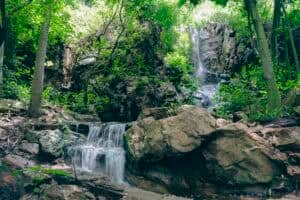'I’ve even had Brazilian clients wanting to visit Jacaranda City, even though the tree originally comes from South America.'

It’s an alien, it has a vibrant purple colour and it has worked its way into the hearts of people in Tshwane with its interesting history and the fact that it is a magnet for tourists.
The jacaranda tree has become part of the capital city’s culture and is known in many parts of the world. On Thursday, Prof Anton van Vollenhoven, along with the department of arts and culture, showed a presentation on Pretoria’s beloved purple-flowered tree.
Valentino Meirotti, a local tour guide, said jacarandas have become part of Pretoria’s culture.
“If you are booking a trip and mention Tshwane or Pretoria, people immediately ask if it is the place with the beautiful purple flowers. Others ask about Jacaranda City,” Meirotti said.
He said tourists’ photos on social media also indicated a positive connotation with jacarandas.
“I have clients that have come past just to see the jacarandas bloom,” Meirotti said.
“It’s more the purple city than it is the capital city.
“I’ve even had Brazilian clients wanting to visit Jacaranda City, even though the tree originally comes from South America.”
Anton van Vollenhoven, the director of Archaetnos Archaeologists and Cultural Heritage Resources Consultants, said jacaranda trees have cultural heritage significance, especially in Tshwane.
“When certain developments in the city have threatened the jacaranda trees, there seems to be a public outcry, which gives the impression the trees have a specific meaning for people of the city,” he said.
Van Vollenhoven said the jacaranda tree was originally from tropical and subtropical regions of Mexico in Central America.
“The first two trees were planted in 1938 when travelling nurses stayed at Myrtle Lodge, which is now Sunnyside School, where they still stand.
“The most influential person in terms of jacarandas in Pretoria was Frank Walton Jameson, who was famous for planting trees in Pretoria and Kimberley,” he said.
Van Vollenhoven said in 1905 there was an interdict against the Pretoria sewerage scheme which led to Jameson becoming the town engineer of Pretoria.
Jameson used jacarandas as street trees because of their adaptability to local conditions, especially the cold winter months.
“This gives them a natural pruning, which meant less effort was needed from the city park department,” Van Vollenhoven said.
In 1911, Jameson planted 64 kilometres of jacaranda trees in Pretoria and the city council donated two jacaranda trees to residents who removed other large trees on their property that were a threat to the sewerage system.
“When Jameson left Pretoria, at least 6 000 trees had been planted and by 1957 there were 25 000 jacarandas and it was named Jacaranda City,” he said.
Van Vollenhoven said some people claimed there were more Jacaranda trees in Johannesburg but it was untrue.
“The current estimate is 37 000 along the streets of Tshwane and 65 000 in total and 100 rare white jacarandas in Herbert Baker Street and Wonderpoort,” he said.
Pupils in Pretoria believe if a jacaranda flower falls on their head they will pass exams.
“This is the strongest indication the jacaranda has become part of the social culture of the capital,” Van Vollenhoven said.






